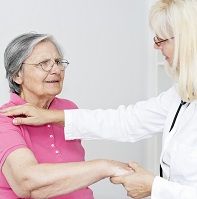Article
Stroke Rehab: More Does Not Matter
Author(s):
Patients who got twice as much rehabilitative care after a stroke did no better than peers who got usual therapy, a multi-center trial called ICARE found.

Patients who got twice as much rehabilitative care after a stroke did no better than peers who got usual therapy, a multi-center trial called ICARE found.
Reporting at the American Heart Association/American Stroke Association International Stroke Conference in Nashville, Tenn. Feb. 13, Carolee Winstein, PhD of the University of Southern Californiaand colleagues reported the disappointing findings.
“The bottom line is that getting more than twice the therapy did not improve outcomes,” Winstein said, “More is not necessarily better.”
Though patients definitely preferred the patient-centered accelerated therapy they received, the study’s mid-points and end-points showed no significant differences in how well they were able to effectively incorporate their affected arm and hand into daily activities. There were 361 patients in the study, with a mean age of 61 years.
Though in general the study affirmed that “task-based, intense motor therapy training approaches” to restoring function do work, the researchers found that patients appeared to hit a wall when it came to getting completely better.
Patients were rated on the severity of their loss of upper limb use and some got therapy for 30 hours in the form of three sessions a week for 10 weeks. One group also got an “accelerated benefit” in which more attention was paid to their psychological needs. Patients who had no arm movement did not participate in the study. Controls got usual and customary occupational therapy as prescribed by their doctors.
At 12-months post-stroke, the groups showed no significant differences in their physical function, overall strength, reintegration to normal living or health-related quality of life—though some individual patients had superior results.
“Everyone improved, but we still don’t know how much therapy is enough,” Winstein said, discussing the study at the conference. “This flies in the face of ‘more is better’ in terms of neuroplasticity,” she added. The study was federally funded.




